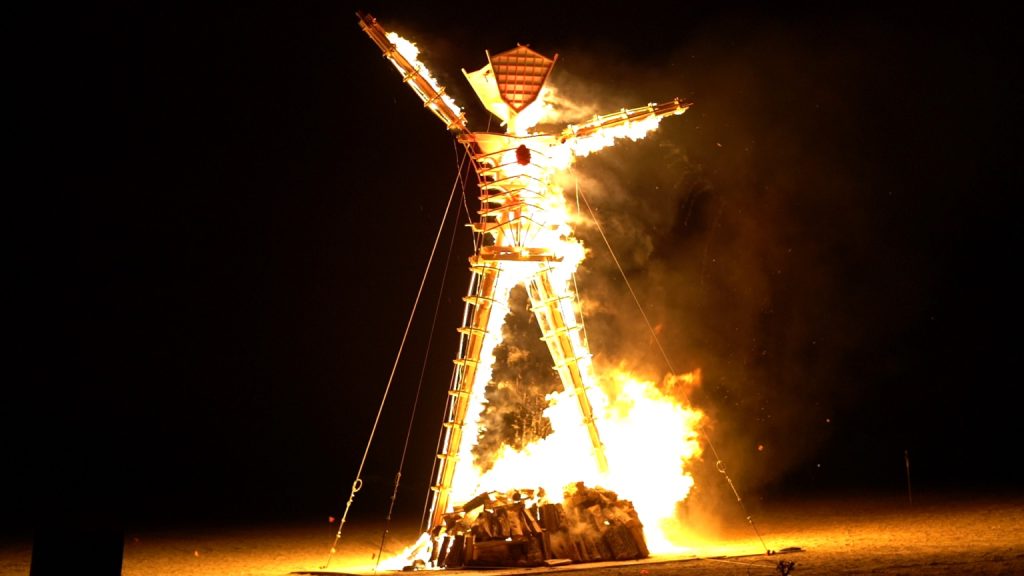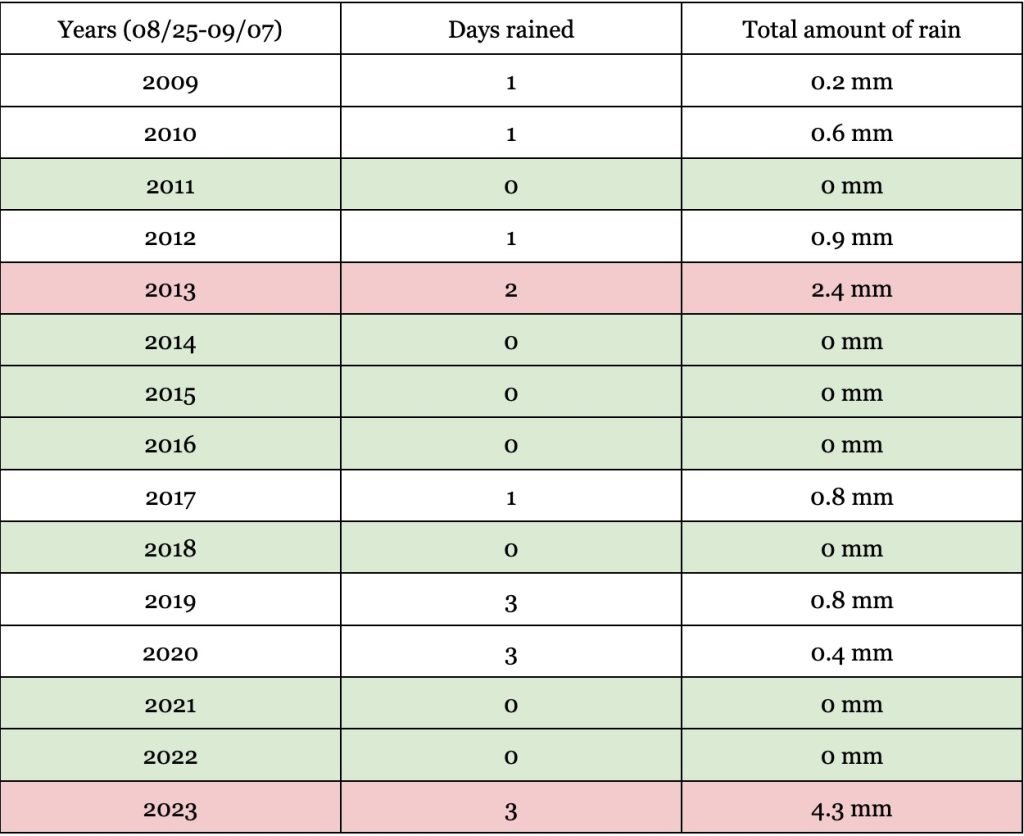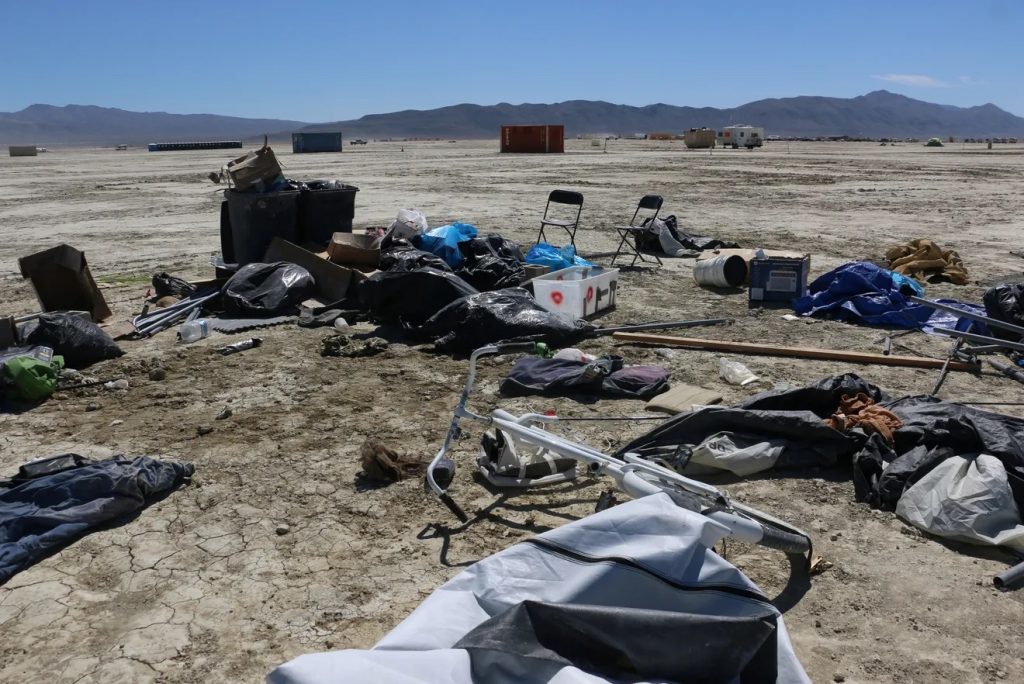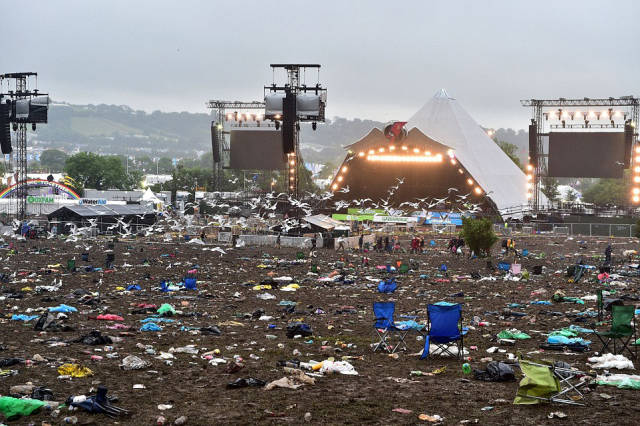Burning Man caught many people’s attention in early September of this year when the thousands of people camping in Black Rock City were suddenly trapped due to weather. While a majority of the public seemed to be aware of Burning Man, it shed some light on what happens at the festival. It also provided insight into what is left behind afterward.
As an organization, Burning Man has two problems when it comes to the environment: the extreme and sudden weather conditions potentially caused by climate change and the pollution that is left after the festival ends. As a former attendee of Burning Man—or Burner—I was shocked to see everything as it unfolded.

History
Burning Man started in 1986 on a beach in California. When the number of attendees grew, the event moved to Black Rock City, a desert in North-West Nevada. It became what it is now known as today, a week-long festival full of art and few rules. Despite the lack of specific rules, everyone was expected to follow the ten principles that has been put in place by one of the founders:
- Radical inclusion
- Gifting
- Decommodification
- Radical self-reliance
- Radical self-expression
- Communal effort
- Civic responsibility
- Leave no trace
- Participation
- Immediacy
These principles are still in place today and still hold the same importance they held when they were first created. The official Burning Man website says their intention is: “to generate society that connects each individual to his or her creative powers, to participation in community, to the larger realm of civic life, and to the even greater world of nature that exists beyond society.

The reason that it is called Burning Man is as it sounds. On one of the last days of the festival, everyone comes together around a giant wooden statue of a man and sets it on fire.Within the past decade, the festival has become more popular and added to many people’s bucket lists. It was even the setting for an episode of The Simpsons titled Blazed and Confused (S26, E7). With this rise in new attendees came a rise in unawareness. Unawareness of the principles, culture, and how to survive the festival. After all, you are spending a week in the desert with no way to get extra supplies if you forgot anything.
Burning Man and Weather
The reason Burning Man dominated the news cycle in early September was because of the sudden storm that hit Black Rock City. Attendees experienced torrential downpours. What was so dangerous about this downpour was that the desert the festival takes place in is a dried-up lake bed, so when water gets introduced, the ground turns to a thick, soupy clay.
Using worldweatheronline.com to look at the past couple of years, it is common to have little to no rain the week of Burning Man.

Area Code 89412 Weather History 2009-2023, Credit: Grace M. Anderson
Throughout my childhood, I attended Burning Man six times. I don’t remember seeing rain there once. Yes, the weather was extreme when it came to the temperature difference, but that is where the extremity started and ended.
With so many weather-related records being broken this past summer and into fall, it’s not surprising to see the desert where Burning Man takes place being affected. On October 3rd, climate scientist Zeke Hausfather tweeted; “The first global temperature data is in for the full month of September. This month was, in my professional opinion as a climate scientist – absolutely gobsmackingly bananas.”
Friederike Otto, a lecturer in climate science at the Grantham Institute backs up Hausfather’s point in her quote; “Temperature records continue to be broken because we have not stopped burning fossil fuels. It is that simple… People and ecosystems are dying.” The mountains of proof and years of evidence connecting human-influenced climate change to extreme weather. It is then likely that climate change played a role in Black Rock City’s extreme weather.
Trash at Burning Man
Going to Burning Man many times as a child made me build up some habits over time. I distinctly remember getting a couple of gallons of water at every truck stop and Walmart we parked at. I remember the nightly routine of cleaning the caked-on dust off our feet with baby wipes. Yet the most important rule that stands out in my mind is “leave nothing behind.”
Out at Burning Man, trash wasn’t called trash. Instead, it was “matter out of place” or “MOOP.” MOOP could be anything that had been left behind by someone. One year, I lost a tooth which became MOOP when we couldn’t find it.
Whenever you saw a piece of MOOP, you were supposed to pick it up and bring it back to your camp. You could put it in your trash bag and take it with you when you leave or give it to someone else to throw away. No matter who ended up with the MOOP, they knew that they had to take it out of the desert when the festival was over.
There was one year when my family and I stayed an extra day after the festival. I remember waking up and stepping outside to nothing. There were a few RVs and tents scattered around, but they each had people still staying in them. The rule was honored.
However, after the storm earlier this year, photos circulated showing the amount of trash that had been left behind. It was a grim sight to see and one of the things that shocked me the most about the whole event.

Curious, I looked at the Burning Man website to see their thoughts on the trash left behind. Many veteran Burners are upset over the uptick in trash and some have even returned to Black Rock City to help clean up what was left. The people who do that deserve recognition for their work, however, it still doesn’t address the bigger issue; the trash isn’t supposed to be left there in the first place. The majority of Burning Man attendees are adults who should not need other adults to clean up after them. Cleaning an entire desert should not be placed on the backs of a handful of dedicated volunteers.
Dumping and leaving trash goes against one of the core principles of Burning Man and is a sign of the decay surrounding the festival’s culture. It means Burning Man begins to lose its status as the utopia it claims to be and instead turns into any other festival. When that happens, Burning Man is no longer about fighting against and burning the man but instead just another step for the man.
Festivals and Waste
Festivals are generally fun places to go. Whether you prefer music, food, or themed festivals (for example, a Renaissance fair), it is somewhere you can spend a day being entertained. However, if you’ve frequented festivals often, you’re probably familiar with how quickly the trash cans spread around the area fill up. By the end of it, they are often overflowing with small piles stacked around them.
Attendees leaving behind mountains of trash after Burning Man is not a new thing. In 2017 thousands of bicycles were left behind after the festival. The official Burning Man website published a “MOOP Map” in March 2023 showing a jump in trash left behind.
A study done in 2019 by the BBC found that: “Each of the major music festivals in the US, such as Coachella, Stagecoach and Desert Trip, generate around 100 tonnes of solid waste every day, while an estimated 23,500 tonnes of waste are produced by music festivals in the UK each year – about the same as weight as 78 fully loaded Boeing 747 Jumbo Jets.” The BBC goes on to say: “Festivalgoers discard wristbands, fancy dress clothing, glitter, ponchos, toiletries, sleeping bags, mats, and tents all made from polymers that can persist in the environment for decades if not centuries.” Many of those items overlap with what had been abandoned after this past Burning Man.

Despite these grim images, steps have been taken to combat the amount of trash left behind. For example, Love Your Tent is an organization that works with festivals to try and reduce the amount of tents left behind. Other festivals have implemented changes that would reduce or remove single-use plastics. By implementing sustainable changes, we can reduce the amount of trash we create both at festivals and in our every day lives. There is hope for cleaner festivals that hold the principle of leave no trace.
Leave a Reply